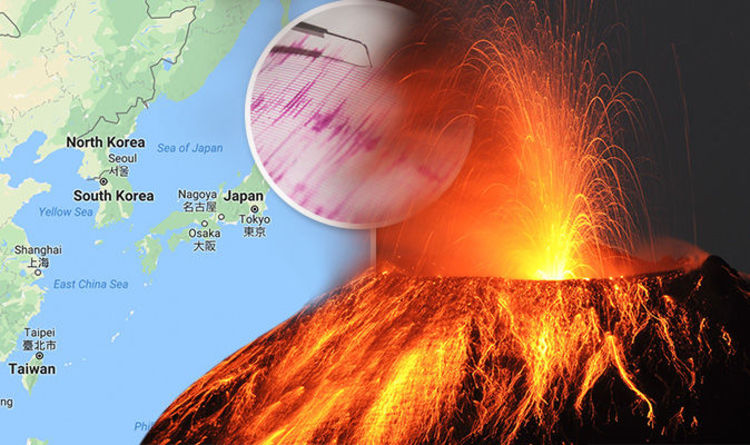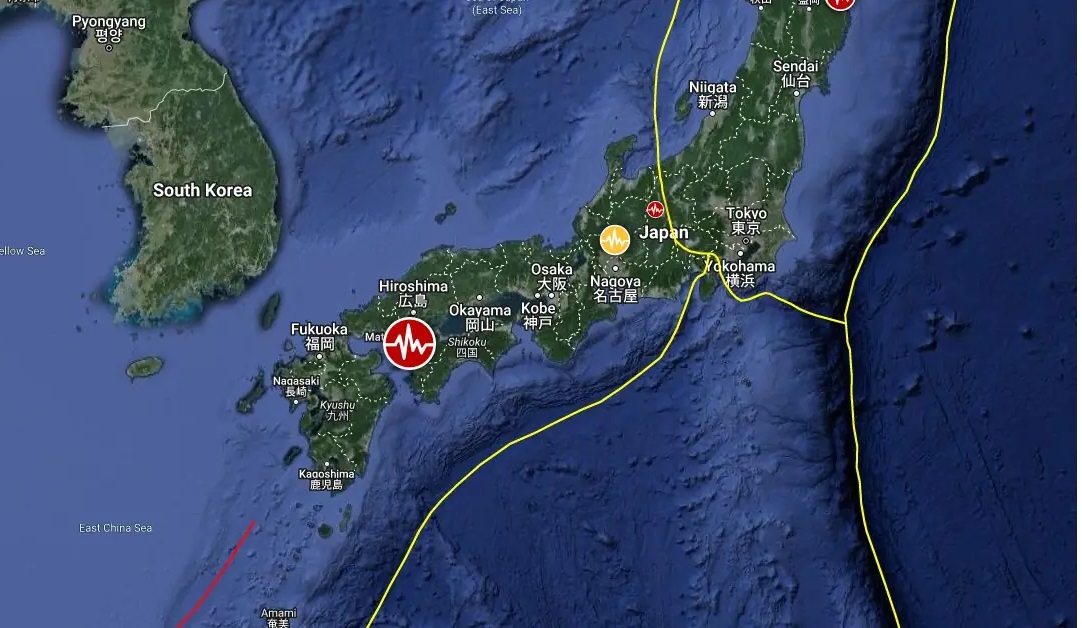TOKYO: A magnitude 6.6 earthquake slammed a large area of western Japan late Wednesday, injuring at least nine people. According to the Japan Meteorological Agency, the quake at 11.14pm scored 6.6 on the Richter scale.
The quake was felt the hardest at Ainan, Ehime Prefecture and Sukumo, Kochi Prefecture, both on Shikoku Island.
According to prefecture administrations and local fire departments, six persons were injured in Ehime Prefecture, one in Kochi Prefecture, and two in Oita Prefecture, all in southwestern Japan. Shikoku Railway stated services on some lines were canceled beginning Thursday.
Shikoku Electric Power said that a valve fault lowered the power output of the No. 3 reactor at the Ikata nuclear complex in Ehime Prefecture by 2%, but there was no severe issue with overall operations.
In Sukumo, 23 people were temporarily evacuated, and water supplies were affected throughout the city owing to burst pipes in numerous spots. Ten residents in Yusuhara, Kochi Prefecture, were also temporally disconnected owing to fallen trees.
The quake in the Bungo Channel occurred in a zone where a government commission has predicted a severe temblor with a magnitude of at least 8.0 within the next 30 years.
However, an agency official told a press conference that the recent tremor did not enhance the likelihood of a catastrophic earthquake.

Japan sits on the ring of fire
According to the agency, the earthquake occurred on the Philippine Sea Plate, which has a different seismic mechanism than a probable Nankai Trough quake. The epicentre was also approximately 10 kilometers deeper than the plate boundary, indicating a large earthquake, according to the agency.
On January 1, as Japan celebrated the new year, a 7.5-magnitude earthquake rocked the Noto Peninsula, destroying houses, forcing widespread evacuations, and killing over 200 people.
Japan is located on the Ring of Fire, an area prone to earthquakes caused by tectonic plate movements. Earthquakes often rock the island nation, with thousands occurring each year. Major earthquakes have wrecked cities, caused widespread damage, and killed many people over the years.
In 2011, a tremendous 9.0 magnitude earthquake struck off the coast of Tohoku, causing a catastrophic tsunami that crippled the Fukushima nuclear power facility. The calamity claimed approximately 16,000 lives and displaced hundreds of thousands.
Despite strict building rules and preparatory measures, Japan’s location makes it vulnerable to these natural disasters. To reduce fatalities, citizens keep watchful, practicing drills and heeding warnings when tremors strike.






